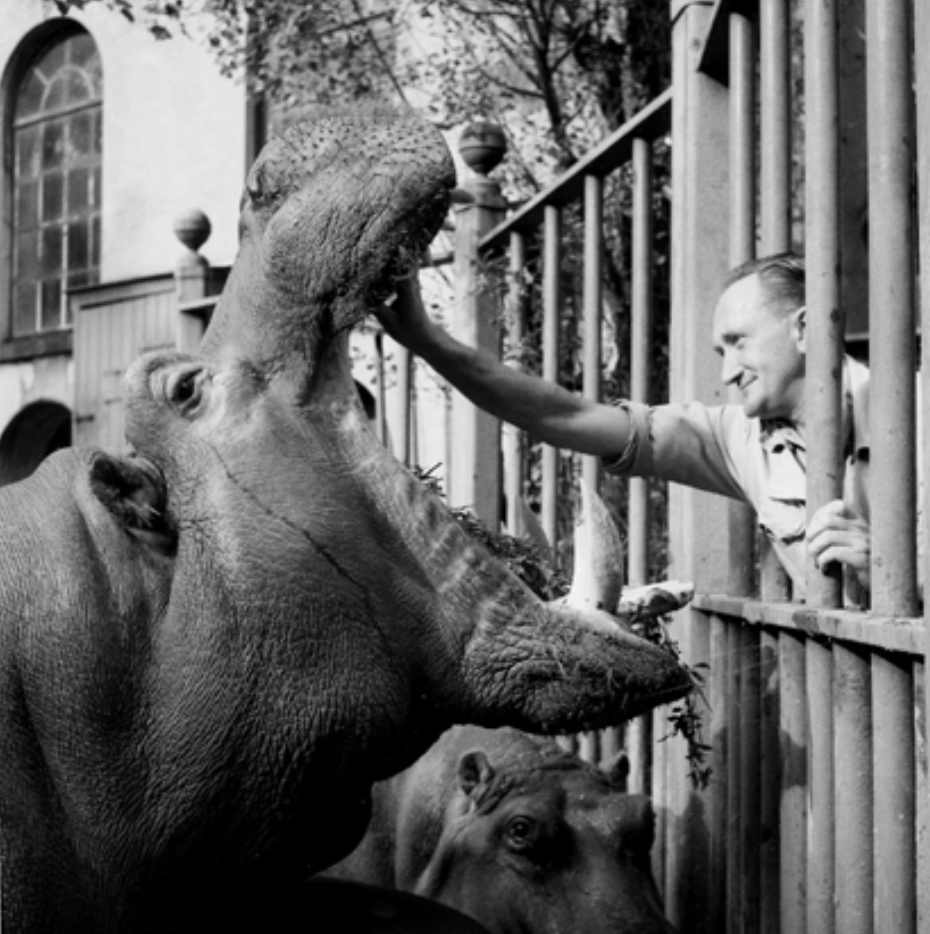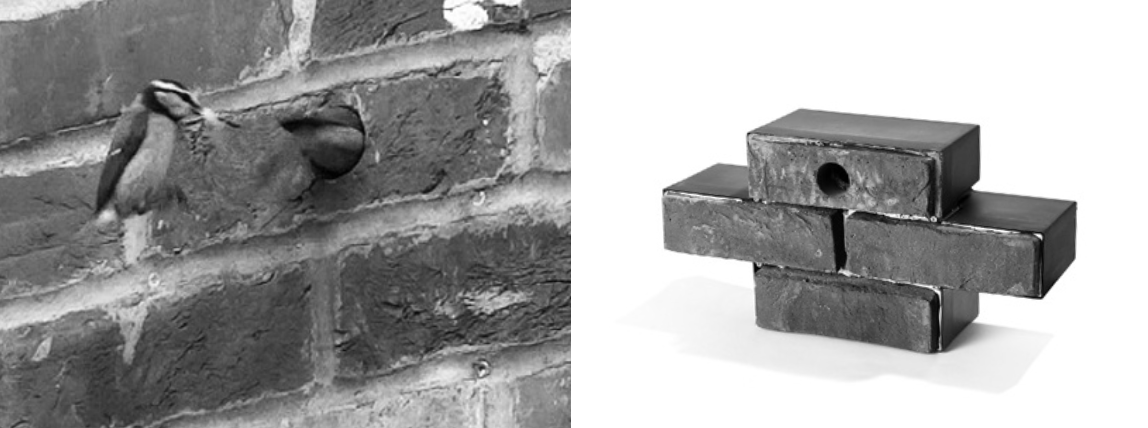Thijs de Zeeuw:
Learning from Zoos
Thijs is a landscape architect based in Amsterdam. He has designed many projects of enclosures for animals in zoos. In particular for Artis, the oldest zoo in the Netherlands and one of the oldest zoos of mainland Europe. I have met Thijs in his studio to talk together about his ideas and knowledge about animals.
Angelo Renna — Can you introduce me to your work? You speak about nature-optimism, it would be great to hear more about it.
Thijs de Zeeuw — Well, I am a landscape architect. I think I am more prone to work with animals because landscape architects work with dynamic elements, with living plants but also in that case with animals. I was always very much into nature when I was small, so I have knowledge about birds and plants.
I graduated on a project - the (un)conditional garden - which was a garden that shows the urban nature. This garden aims to provide all the niches the city provides to nature and show species that live here around us here in the city. This project got me into Artis, I presented it there and it got them very enthusiastically. I never imagined working in a zoo, but I love it. I think Artis is generous in giving room for experimentation, for developing ideas about our relationship with animals and how to show and display animals.
I designed several animal enclosures, which is the place where animals will stay their whole life. Therefore, it feels like a big responsibility for me to design an enclosure for an animal so that forces me to do it best for each creature and that is the interesting part. Being involved in the animal’s life and its world is something we humans cannot do of course. We are triggered, however by such creatures because if you dig into different cultures you discover that wherever in the world the affinity with animals is always evident. This whole animal world fascinates us as humans tremendously. So that is one thing.
The second thing is the audience, what do you want to tell them; do you want to show the animal in an image, you create an image of an animal and its surroundings, do you want it to be the landscape where it comes from although it has never been there. These are the questions that go through my mind while designing.
There is also a small invisible third party, which are the keepers and they have to maintain the enclosure, they have to manage the animals, bring it in, bring it out and so on. They have to work with them all day and they have a secret saying on how things need to look.

Designing for zoos you have three contractors, you have the animal, the audience, and the keeper, so it’s three designs in one. And, if it’s all right, you only see it as one thing.
I have been working for Artis for 5 years, and right now I am in a phase where I feel like reflecting about what I have been doing and questioning if it is right.
We design landscapes, which as much as possible to allow the animal to feel good and perform natural behaviours. I have designed the elephant enclosure for Artis zoo and when everything was finished a few years later; we gave them some plastic balls to play with. It was a fascinating aspect for me, to see how animals can interact and learn from objects that are not part of the natural environment.
AR — So to come back to the nature optimism, what is it?
TZ — I like these two words together. One of the first moments when the words got was in Dublin, in the Natural History museum, where you enter the building and everything is still like it was in 1880-1890, and you enter this world where people are fascinated about nature and they wanted to show it with total enthusiasm. There is this optimism about how rich, diverse and big this Nature is. And then a hundred years later, we have ruined a lot of ecosystems and habitats and a lot of nature is under pressure and that resulted in a kind of huge feeling of guilt, in a kind of cramped trying to conserve everything that still exists but in way it has to stay the same. In my opinion, that is nature pessimism. What I am searching for, although I don’t have a fixed perspective on what nature optimism should be, is that this optimism we had in 1890 should become an engine to create a better relationship with the natural world.

Donna Haraway wrote a book called “The Camille Stories: Children of Compost” that addresses the problem of our overpopulation and she has a very nice idea about every child having three parents. This third parent could be a butterfly or any other animal. There is optimism in saying that, it is searching for new ways of living together.
I want to have this optimism and energy in finding ways for living together, and it applies also very much to the city.
We have these images of nature, like forests, dunes, river systems, but we don’t have an image for the city. It is not part of our vocabulary at the moment. We have to put the city into our consciousness with nature.

AR — Wild animals more often move to cities nowadays. Here they can find food, but it also force them to move in because cities are growing so fast that space for free animals is being reduced, do you believe design could help this coexistence between people and animals?
TZ — I believe so. You have simple things like roof tiles or green roofs, these allow animals to live in your life. And, we are still in search of finding how to do it. What sometimes annoys me in this trend is that we are species-focused when we try to design for animals. We also judge the success of a design by the way it is used by the right species. There is also this tendency in architecture and construction, to have your house secure-tight and a closed system.
They are now trying to find new ways to open facades, roofs and perforate the skin of buildings for any animal and let animals choose whether they will inhabit these spaces or not. We have a lot of animals in the city, but we never design the city for them.
These past 20 years, we have been fixing holes, cleaning up the gardens, and that is a pity for biodiversity in cities. I think it can raise awareness to design for species, but the risk is that if it doesn’t work, people get very critical about it. So I believe it should be more about being generous and designing for more than one animal. It is the same in the zoo, if you design an enclosure for animals, you would like to design the ideal place for them but it should be more about designing an enclosure which has a variety of choices for the animals. This will allow animals to choose their place and preference. I believe this is what we should do in the city.

AR — Have you ever applied these rules of the zoo in the city? Do you believe it could work?
TZ — There are different rules to design with. In the zoo, the animal is on display and there are different requirements for the design. There are many ways to look at it. You can see the zoo as our ideal nature reserve with the animals that we like the most but you can also see the city as a nature reserve. You can see driving through the city as a safari by emphasising certain spots.
At the dock in Amsterdam you can see the pigeons; if you go through the red light district you can see the swans breeding on the canals, the parrots of the Vondelpark.
I myself did not apply my knowledge of the zoo to the city yet. I was for now too much involved in designing for the zoo. It is in the back of my mind to apply my knowledge to animals in the city and also to people in the city. You find out a lot about how animals use their space and you could also apply it to humans I think.
- AR — What can you design for animals in the city? And do you think we can create awareness of biodiversity by design? *
TZ — A lot of nature in the city is there because it is there, not because we wanted it to be there. So the question is also should we design for it or more create spaces that could allow it more. You can see a lot of flower and seed mixes, that attract bees and butterflies. And these things are visible, people like it because it looks good but it also listens to the essence of the city.
- AR — In 2008, for a project in Paris, Andrea Branzi proposed to insert free wild animals in cities “forcing” the coexistence between animals and people to increase the biodiversity in the urban environment. Do you think this is the only possibility we have or is there any other way of dealing with biodiversity... A “softer” way perhaps? *
TZ — Definitely there is. The soft way is, for instance allowing the weeds to grow more, and doing so they will attract more animals. You have very much the health issues with rats and other animals dangerous for people we have to take in consideration. Be careful that you don’t offend people making the conflict between human and non-human bigger. It’s about educating but it should not be the only approach, because the risk is then that this attitude become like a “belief”, or a “religion.”
A few years ago many people began to keep bees in the city because we have a lot of flowers and a big diversity of nectars. This illustrates how important richness in a city is. Richness in a simple way, with no conflicts, with a positive attitude and with nice honey as the result.
- AR — Which is then the zoo of the future? Have you thought about it? *
TZ — Wes, I’m researching about a zoo of the future. With climate change, species will be extinct and other new will emerge. It is just an inevitable process. We should see it as an opportunity to develop new ideas and new solutions. For example, a bacteria called Pentasa bacteria has recently been discovered which can consume plastic. These kinds of processes open us up to new scenarios and perhaps to new forms of design.
The zoo of the future can be a lot of things and one of those is about nature and new organisms. We tend to look at nature by simplifying and organising it by species, habitats, images etc. Deconstructing those systems is one way, and it allows us to understand the complexity and the connections between human and nature.
